If you shoot LEGO minifigs with a phone and have been wanting to get that natural portrait look where just the subject is in focus, you can now do that with a $35 lens from Apexel.
Phone photographers typically have to grapple with backgrounds because of the phone’s wide-angle lens and the deep depth of field, but adding the Apexel 100mm macro lens changes all of that.
By slipping on the adapter and screwing the macro lens into it, phones can now shoot minifig portraits with that shallow depth of field you’d normally only get with dedicated cameras.
In this review, I see how well the Apexel 100mm Macro Lens Kit works for LEGO photography and minifig portraits in particular.
Disclaimer: Apexel sent me this lens for review but all opinions are my own. I have an affiliate link and could earn commissions if you use it, which goes toward creating this type of content.
What’s in the box
The Apexel 100mm Macro Lens Kit includes a 100mm macro lens, a CPL filter, and a phone adapter all neatly tucked into a hard case.
Installation is simple: extend the adapter and mount it on your phone, line up the threaded hole to your default camera (usually your wide-angle lens if you have multiple lenses), then screw the macro lens into the hole.
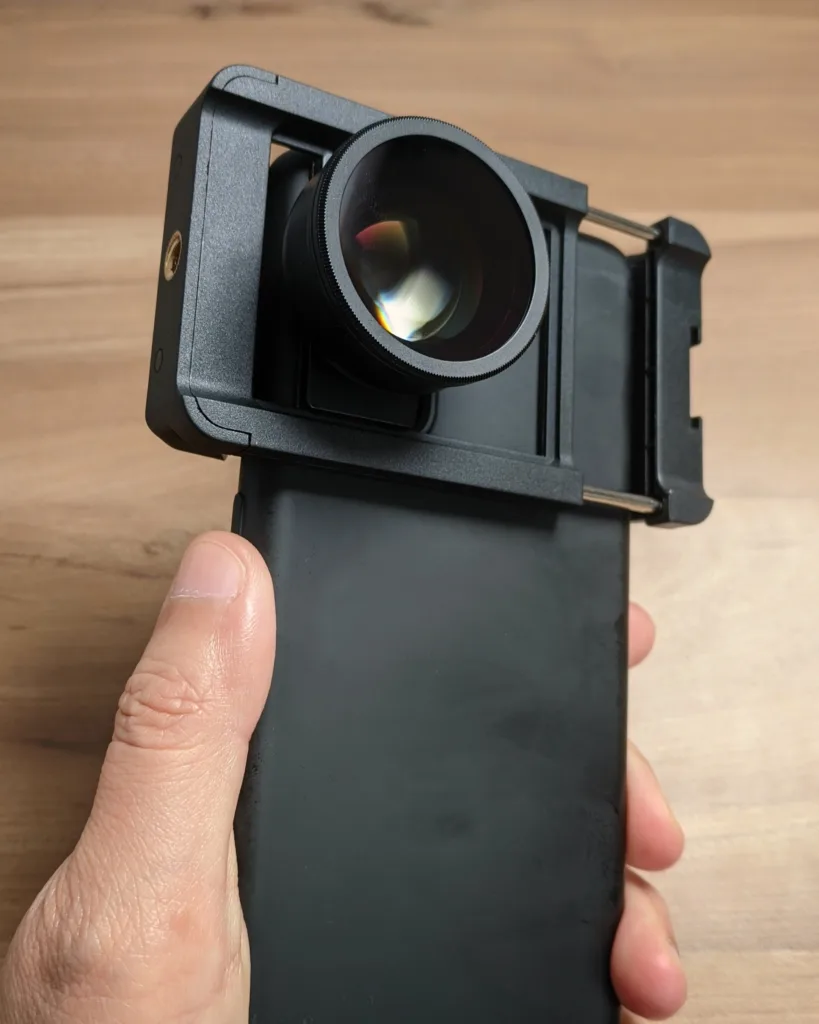
Right away, I like this setup so much better than those clip-on macro lenses. The grip of the adapter is firm–I’m confident that my phone won’t slip out of it– and the sliding panel with the threaded hole makes it easier to align.
Depending on your phone design, you may need to remove the case and add the included spacers on the adapter to make the macro lens sit flush against the phone lens. I kept my slim case on without an issue though. It frankly would be a dealbreaker for me if I had to remove the case every time I wanted to use the macro lens.
The adapter also has a tripod thread mount and a cold shoe to add a light source. While my Manfrotto Pocket Support is too light to use with the macro kit out in the field, I was able to attach a magic arm and clamp for studio shots.
Studio shots
I started the review with shots in my studio nook to test the field of view, working distance, and sharpness of the Apexel macro lens in a more controlled environment.
Some notes on testing: all the photos were shot on a Samsung S20 at 9:16 aspect ratio using the stock camera app with manual focus. To make more accurate comparison shots, I used a magic arm to hold the phone in place.
For the first set of test photos, I set up a fantasy minifig with medium legs in a brick-built alley under natural light:
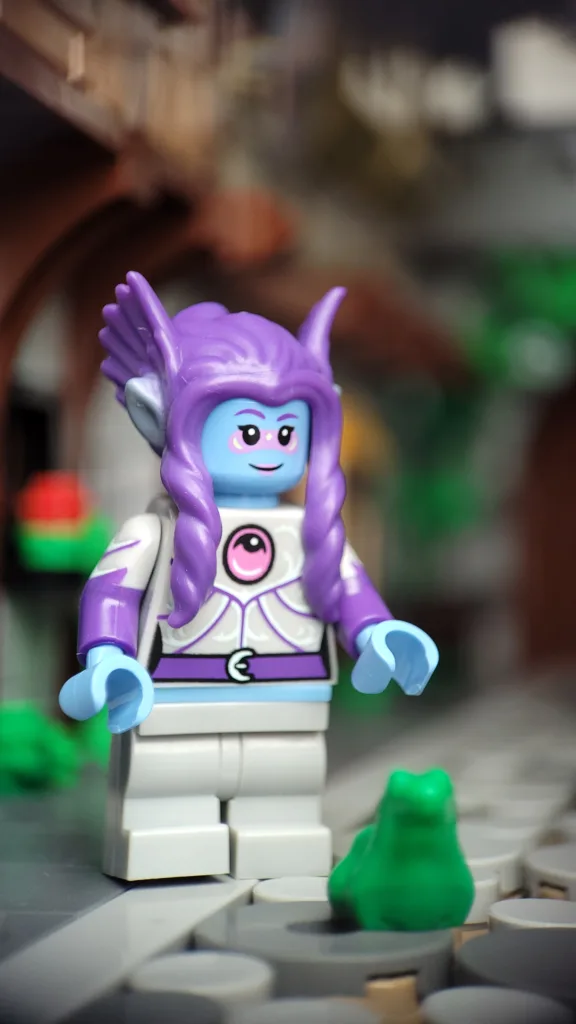
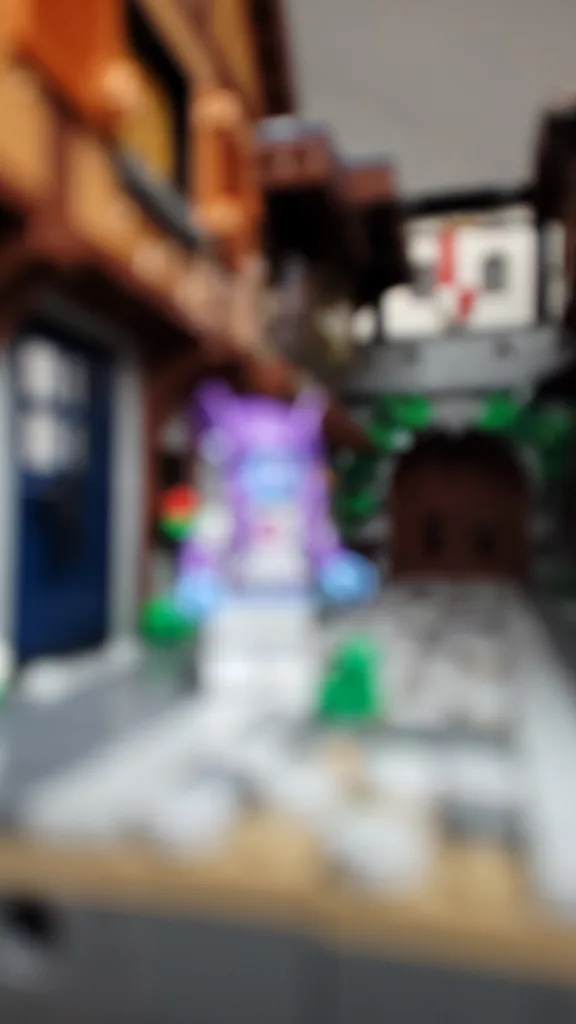
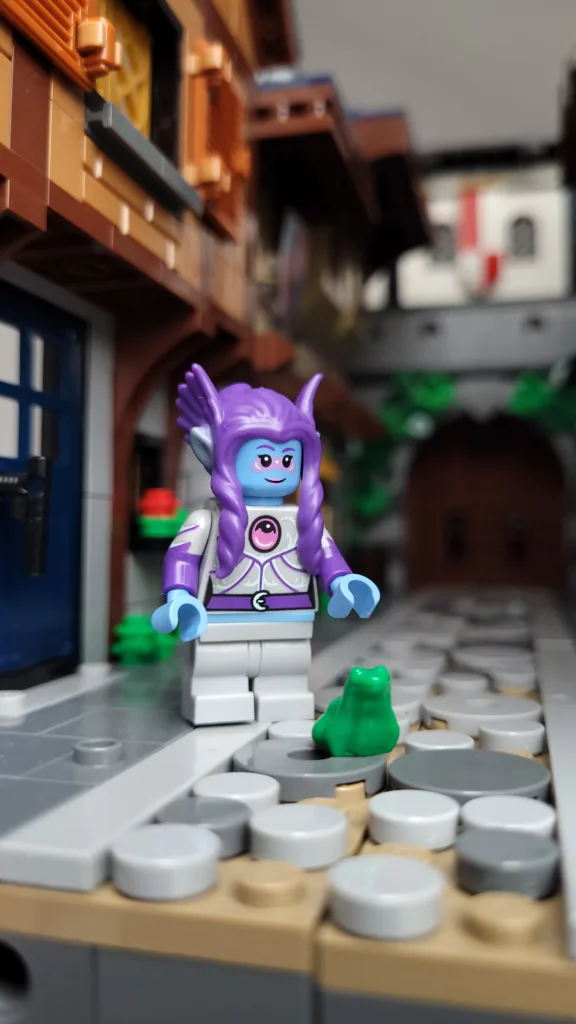
With the macro lens on, there’s a big difference in the field of view and out-of-focus areas compared to a regular phone shot at the same distance. Notice how much less of the scene is captured and how the sharp subject stands out from the defocused background.
In another quick test, I set up a townie minifig on the countertop with a couple of narrow standalone LEGO houses behind her and a small LED camera left to fill in shadows:
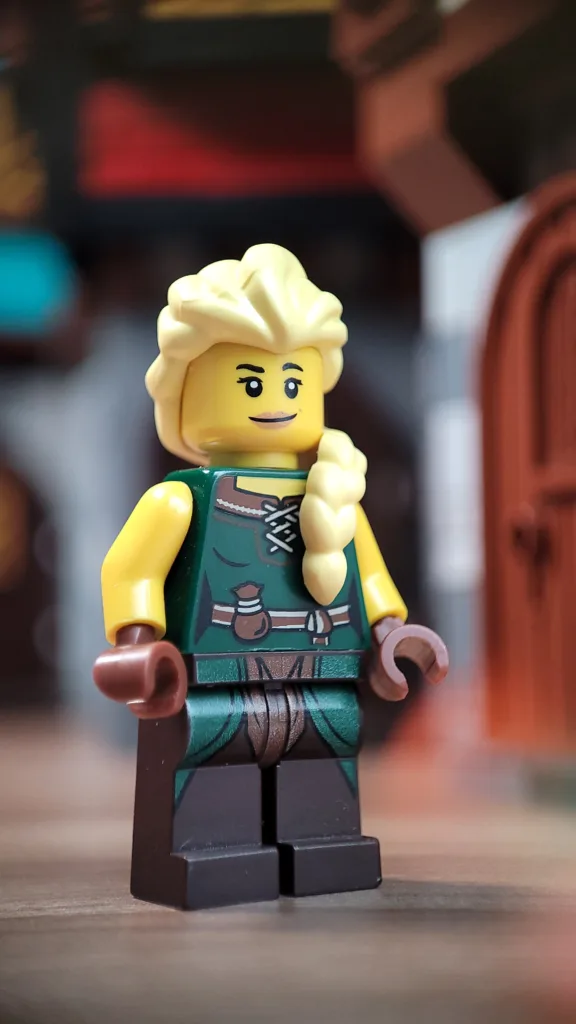
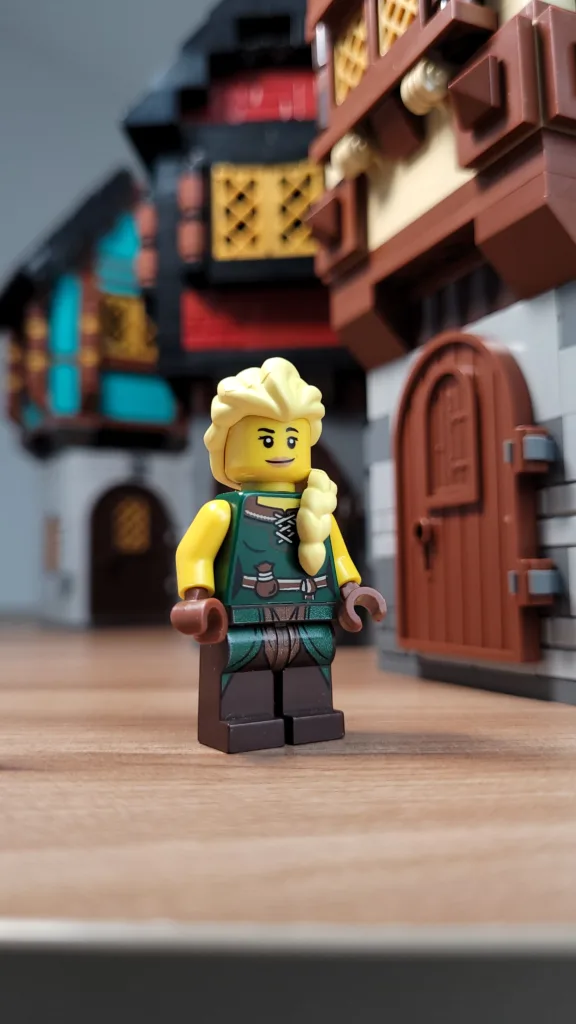
In both sets of photos, the lens only captured about 7-9 bricks tall of the nearest LEGO structure, which means you don’t have to build or craft nearly as much as you need to do with a regular phone lens. Whether you don’t like building, don’t have a lot of environment to work with, or don’t necessarily want the build or background details in the shot, this Apexel 100mm macro can solve that.
When shooting, there’s a good amount of working distance of about 1.2-2.7 inches or 4-7 cm. This is how much space there was between the lens and the subject at the maximum focusing distance:
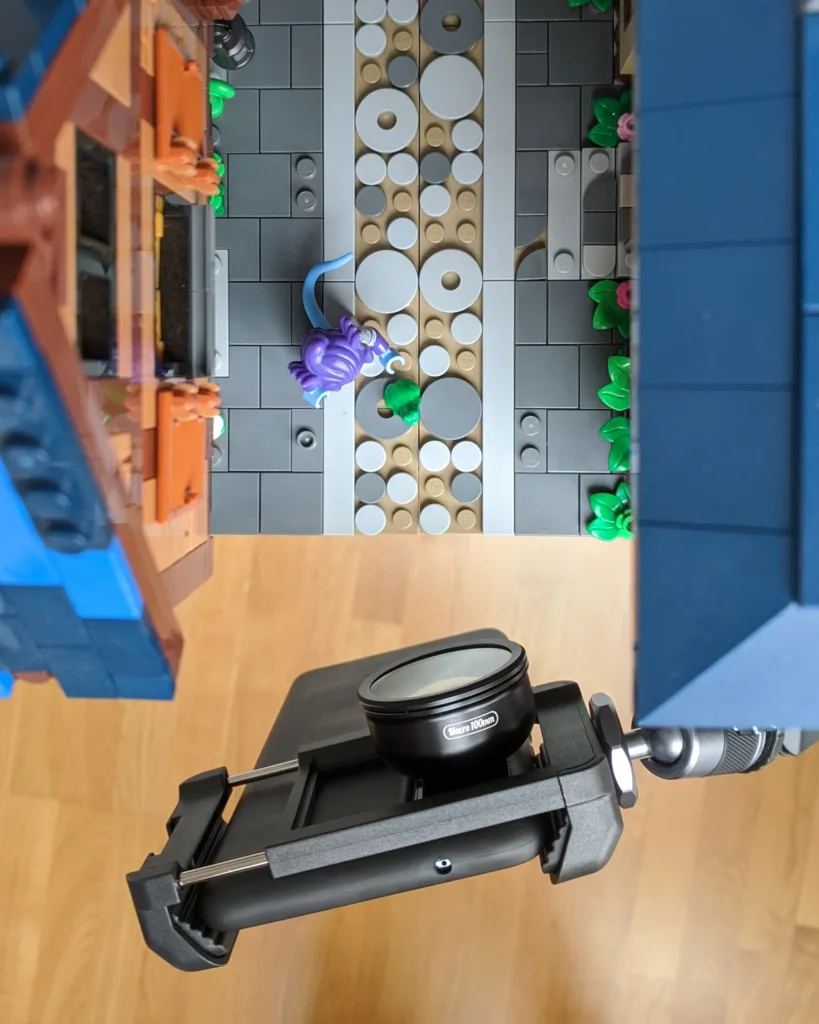
It’s a decent amount of space to work comfortably in. Your phone isn’t likely to cast any shadows on your subjects either, which is a common problem with macro lenses of shorter focal lengths.
At the maximum distance and in vertical orientation like the macro shots above, you get a head-to-toe or full shot of a standard minifig filling most of the frame. In horizontal orientation, you can only get a knees-up or medium wide shot.
In the field
Next, I headed outdoors with Him-Dude and hunted for some highlights to check the bokeh rendering of the lens and glare elimination by the CPL. These shots were handheld.
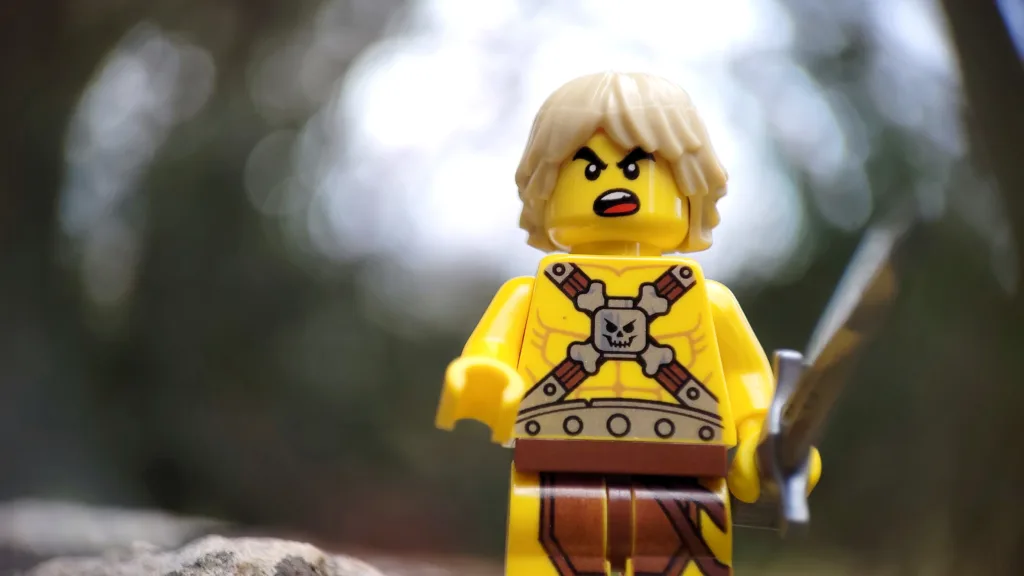
As I mentioned before, you can only get a shot from a minifig’s knees and up in a horizontal orientation. You can get closer for a waist-up shot but you can’t get further for a head-to-toe. That’s a limitation of all add-on macro lenses, not just this Apexel lens.
The bokeh rendered by the Apexel macro lens is a lot more impressive than the tiny circles of highlights you typically get from a regular phone lens. It changes the look so much that you might not think this was shot with a phone at all.
Apexel sells this effect hard on its product pages and I have to agree that this organic bokeh is quite nice. It’s much better than I expected.


The CPL filter works very well too: by rotating the filter, the glare on Him-Dude’s face was significantly reduced. Those bright reflections in the first photo are gone in the second.
I have CPL filters on all my macro lenses for my Sony cameras, so I was really glad to get this bundled with a phone lens. My tiny gripe is that there’s no arrow or dot on the filter ring which makes it much easier to just turn it in the direction of the light source. I have to watch for the effect closely on the screen as I turn instead, which is a pain point if you’re not eye-level with the phone.
You can turn the phone upside down as LEGO photographers commonly do to get a low angle, but you have to tilt it forward a bit to include more of the foreground. It’s just a minor adjustment when working with a narrower field of view.
This kind of low-angle shot is another area where the Apexel adapter wins over clip-on types: it’s more comfortable to work with it at ground level. The adapter extended the length of my phone by a couple of millimeters on top, so when I use it upside down, it’s the adapter instead of my phone touching the ground. Could be useful in puddles or mud.
Lens flaring
One thing to watch out for when using this lens for LEGO photography is lens flare. When I turned on my overhead LED panel, prominent red and green lens flares showed up:
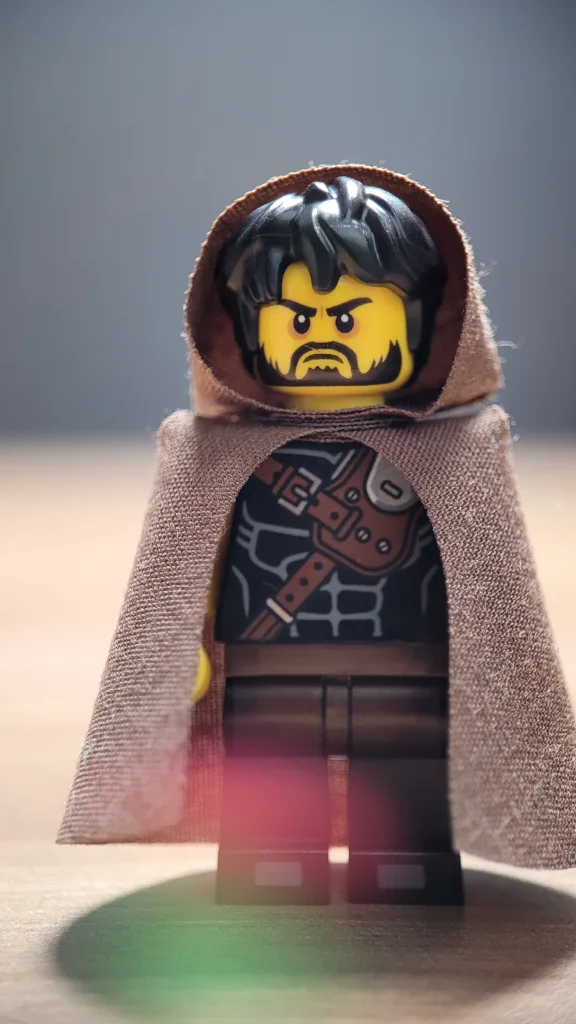
The bright light probably entered the lens since I had it at a low angle, causing the lens flare.
These add-on macro lenses are mostly used at a high angle for insect shots rather than a low angle so these flare issues probably weren’t encountered and mentioned in other reviews. (That’s why I review gear specifically for LEGO photography–the approach and workflow are just very different from other genres.)
The flares also appeared in a few outdoor photos I took at a low angle and on a cloudy day. It’s quite disappointing since those two are staples of LEGO photography. Reframing gets rid of the flare, but the very short focus range makes that challenging to do.
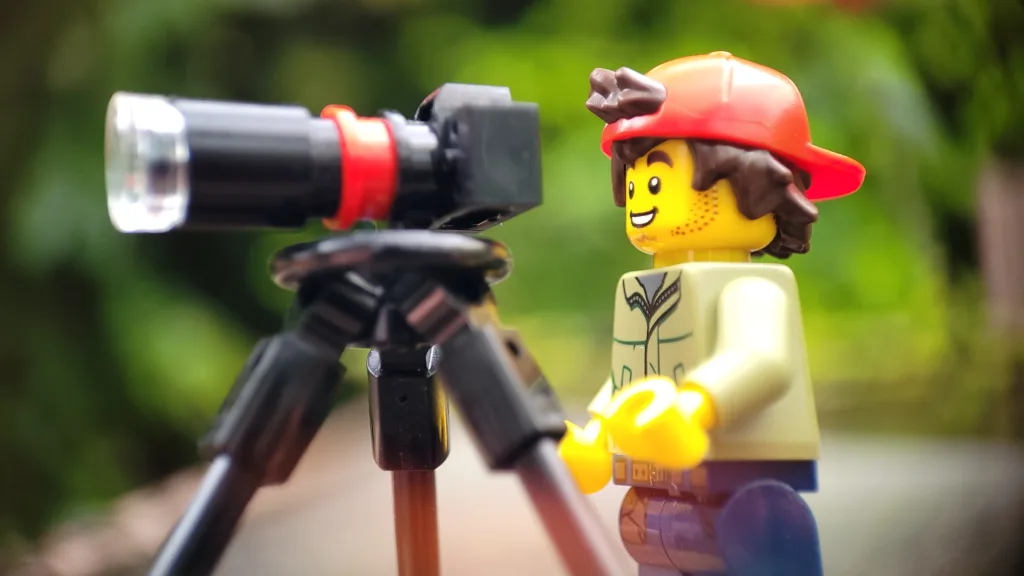
Focusing
This lens works with my regular camera app where you tap to focus, but in certain compositions where I had something other than my subject closer to the lens, it would lock on that instead.
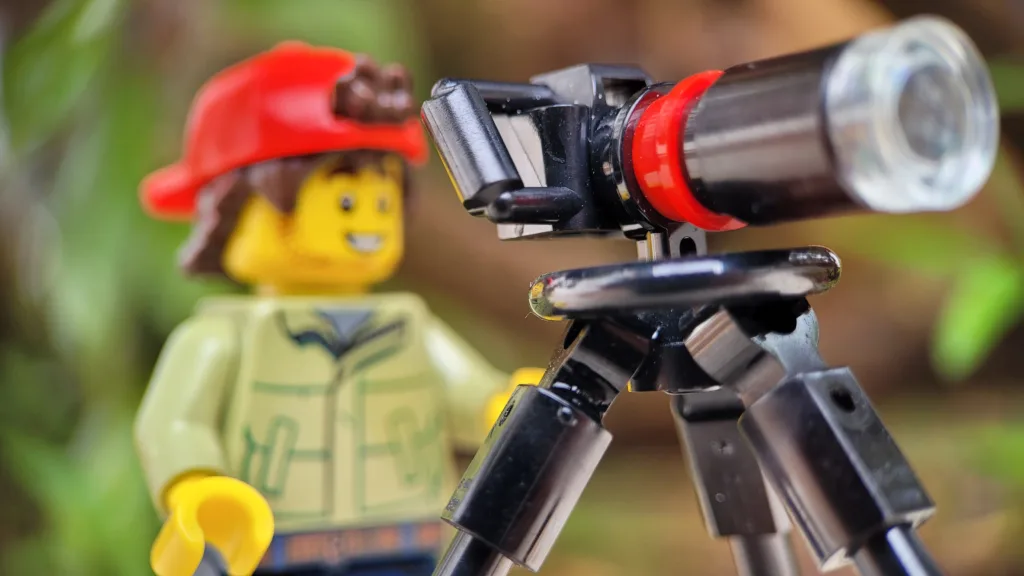
For example, the autofocus (AF) locked on the handle of the LEGO camera in this photo because it was closer to the camera. But by turning or tilting my camera very slightly, it would be able to find the minifig’s face and focus on that.
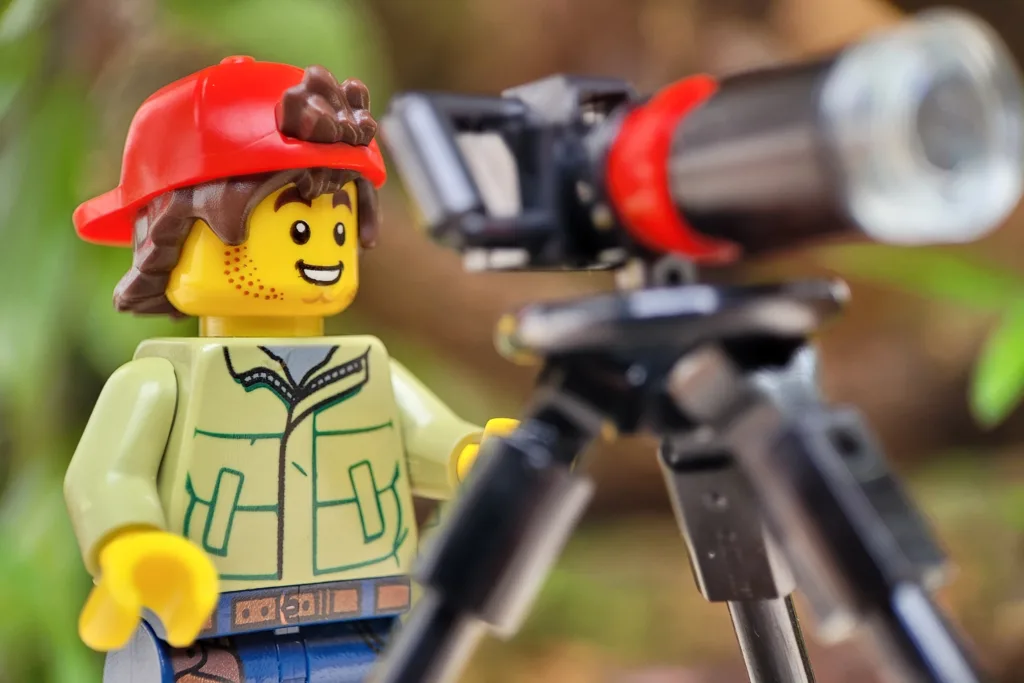
There’s not much of an issue when everything is on the same focal plane, as in this photo where the LEGO camera and the minifig are lined up:
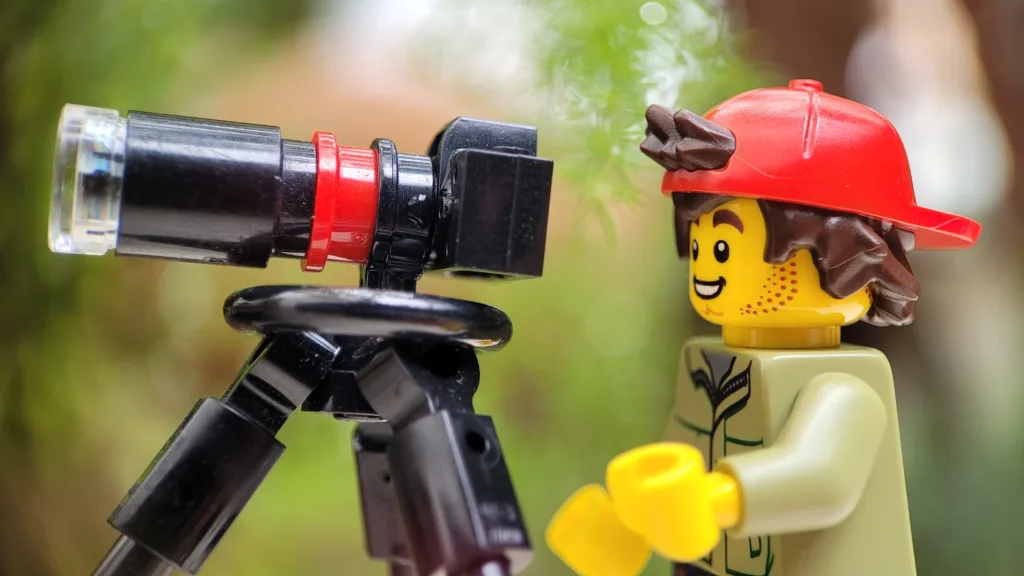
AF in macro photography isn’t generally used because of precise focusing needs, but you can use AF with this lens albeit with some frustration in some setups.
I use manual focus (MF) whenever I shoot macro though, and my stock camera app includes that feature. If yours doesn’t, there are some free apps like Lightroom Mobile that you can try for iOS and Android that let you focus manually.
Who is this lens for?
If you’ve been wanting to create minifig portraits against bokeh backgrounds with a phone, the Apexel 100mm macro lens kit might be a great creative tool to add to your gear.
With an adapter and CPL filter included with the 100mm macro lens, it’s a good value at just $35. It offers phone shooters a different style of photography that works especially well on social media. It’s also fun.
There are the usual cons of the extra bulk, top-heaviness, and diminished convenience of shooting with a phone in the first place when you add on any kind of accessory though. However, the grip on this adapter feels a lot more secure than those small clip-on types so at least it’s easier to walk around with. It’s not going to slip off or shift too much at all.
But, the big issue is the flare that shows up at low-angles. You can work around it with composition and blocking the stray light entering the lens, but I would have liked to have better quality glass to mitigate flaring. That would probably increase the price well above $35 though.
As for framing a shot, you’ll be limited to full shots of minifigs in portrait orientation or medium wide shots in landscape orientation. There’s not much else you can do except get closer to the subject by a couple of centimeters. That could be useful for showing facial expressions or build details.
In a nutshell, the Apexel 100 macro lens kit works quite well as a LEGO minifig portrait lens for phone photographers if you can manage the flaring.
Where to buy:

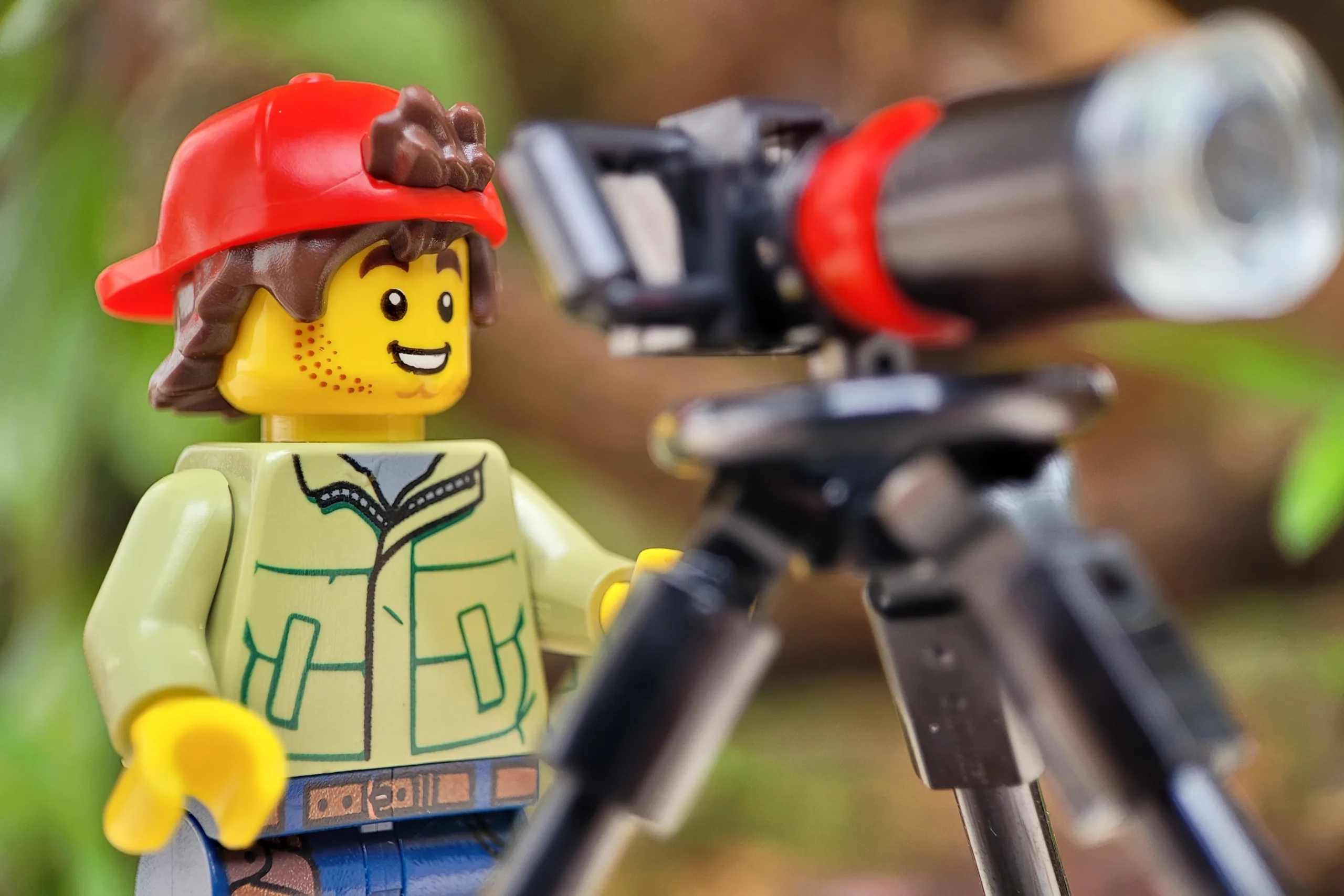
You know what……it looks pretty darn good and it could make the difference for when u want to pop out for some outdoor lego shots but don’t want to be weighed down! Love it!!! Now…..Where’s that competition haha
My favorite day, May 4, haha!
I’m curious to know if it would work as well when shooting video? I do a lot of Reels type video (I used to do Lego photography but Insta killed that). It is really tough to keep a phone lens focused on minifigs since it’s such a small scale.
Keep in mind the range of focus is only a few mm. If you’re on AF, your camera might hunt or not lock on to what you want it to.